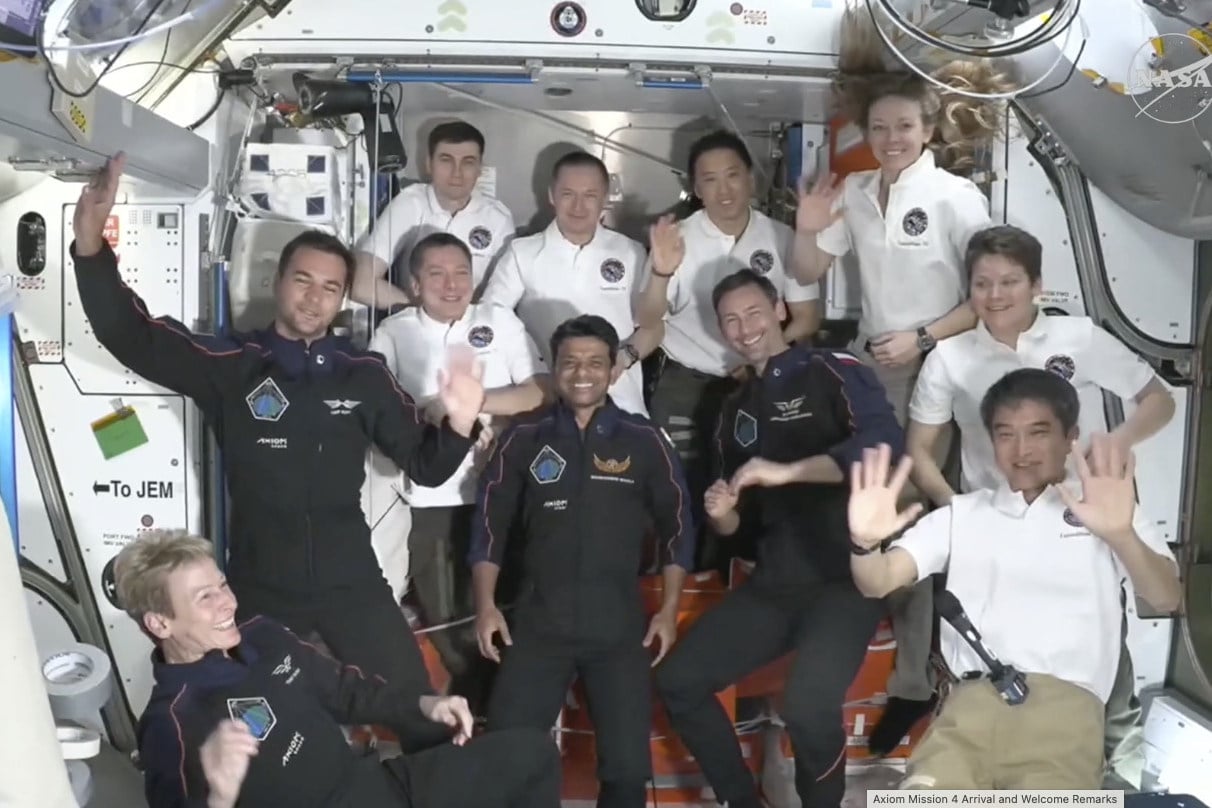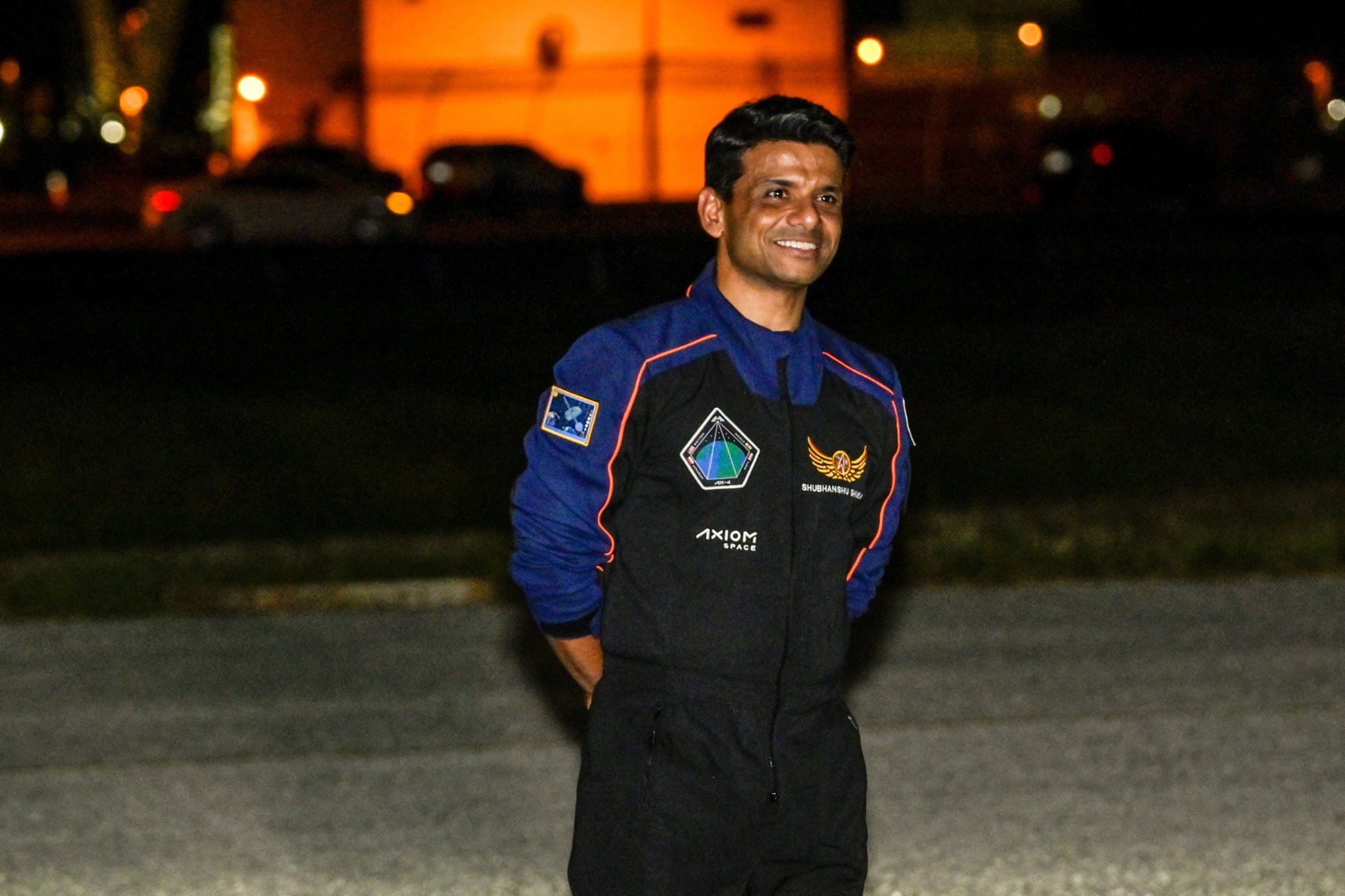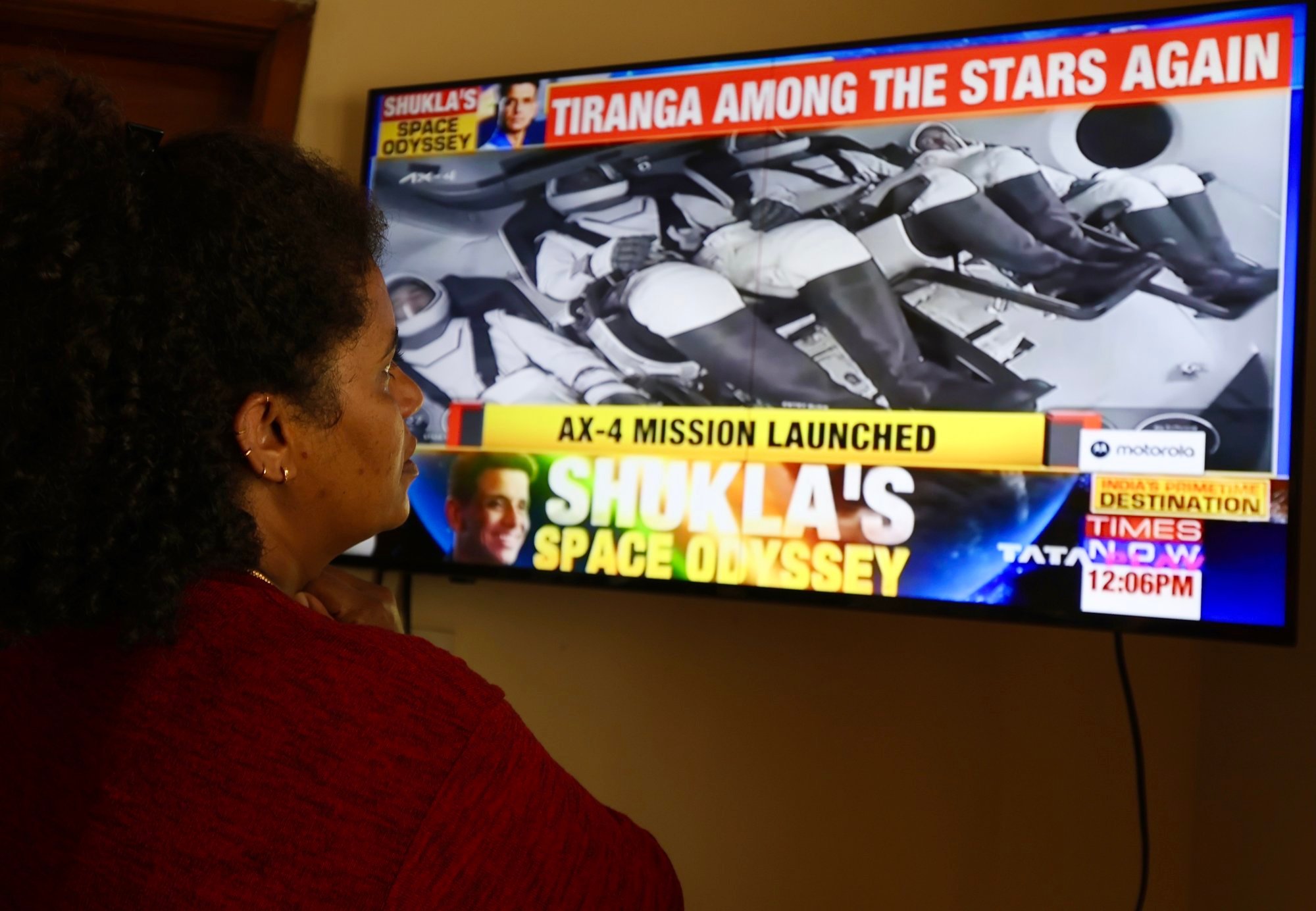India eyes lift-off for space economy after astronaut ISS milestone
Mission marks progress in India’s programme to become the fourth country to independently carry out human space flights

The successful arrival of Indian astronaut Shubhanshu Shukla at the International Space Station (ISS) marks a pivotal moment in the country’s evolving space strategy and signals its desire to join the ranks of global space powers, analysts have said.
The move was also a stepping stone towards India’s first independent crewed mission by 2027 under the Gaganyaan programme, they added.
The initiative is India’s effort to become the fourth country – after Russia, the United States and China – to independently carry out human space flights.
While on the ISS, Shukla will conduct scientific experiments on the effects of microgravity and space radiation on nutrient-rich microalgae, research that could play a vital role in sustaining human life during future deep-space missions.
His participation is also seen as a major boost for India’s broader space ambitions and an inspiration for aspiring astronauts, according to Satya Gupta, president of the VLSI Society of India, which promotes the country’s digital and technological development.

“These scientific endeavours are useful over the long term. Nobody knew how important India’s space economy would become when we started sending rockets 30 years ago,” Gupta said. “It is not a straight calculation where you spend X amount of money and get returns immediately.”
India launched its space programme in the 1960s, culminating in the 1990s in the development of space vehicles for launching low Earth orbit satellites, including hundreds of foreign satellites.
The government-owned Indian Space Research Organisation (ISRO) was in charge of the country’s space programme until about 2023, when the sector was opened up to private firms.
India’s space economy is now projected to expand five-fold to US$44 billion by 2033 over about a decade following its policy relaxations, according to a joint report by the Federation of Indian Chambers of Commerce and Industry and EY in February this year, or 8 per cent of the global market share.
Shukla, who is the pilot for the US commercial mission called Axiom-4, is India’s second astronaut going into space after Wing Commander Rakesh Sharma, who made history in 1984.
The 39-year-old fighter pilot was chosen by ISRO as the prime astronaut for this historic flight.
The Axiom-4, carrying Shukla and three other astronauts, was successfully launched to the ISS on Wednesday.
“Hello everyone, namaskar from space. I am thrilled to be here with my fellow astronauts. Wow, what a ride it was. When I was sitting in the capsule on the launch pad, the only thought in my mind was: let’s just go,” Group Captain Shukla said after the Axiom-4 Mission lift-off.
“I am learning like a baby; how to walk and eat in space,” he added.

Shukla’s participation is expected to provide operational experience that will be instrumental for India’s manned space missions, slashing the time interval required for future endeavours.
India has over the years earned a reputation for its frugal space programme. The US$75 million budget for its moon mission Chandrayaan 3 in 2023 was estimated to have cost less than the Hollywood film Interstellar.
Developing its own space programme has helped India cut down costs significantly by tapping into home-grown scientific research and manpower.
“The success of Chandrayaan-3, where India landed on the moon, the upcoming Gaganyaan, and the plans for India’s own space station are not isolated feats, but are part of a deliberate effort to position India among the world’s most advanced space-faring nations,” Sanjay Nekkanti, co-chair of the Federation of Indian Chambers of Commerce and Industry’s Space and Geospatial Applications Committee, posted on social media X.
The country was preparing for a new era of “indigenous capability”, he said.
The ISRO has already developed key technologies for crew safety, including a successful test of a crew escape system. The first unmanned Gaganyaan mission is planned for later this year.
India now has a dedicated training facility for astronauts in the southern city of Bengaluru, which will allow future astronauts to be selected, trained and flown from the country.
The ISRO is planning to establish a basic, preliminary model of a space station in 2028 before building the larger, final version in 2035.
Long-term vision
“This endeavour [of sending an astronaut into space] certainly puts us heads and shoulders above a majority of nations. If you take out China, Japan and South Korea, how many countries in the Asian region have developed this kind of space capability?” said Raj Kapoor, president of India Blockchain Alliance.
“It reinforces our technological capabilities and resonates with us becoming the world’s fourth-largest economy,” he said. “Maybe in the future we can have collaborations with smaller nations.”
New Delhi could think of offering technology to such nations for building goodwill as well as commercial purposes, Kapoor added.
“The space sector is also fascinating for the youth. It can help us create a workforce for tomorrow. It can therefore become a force multiplier for providing employment opportunities,” he said, highlighting that it resonated with a nationwide digitalisation drive which had unfolded in recent years.
However, he pointed out the urban-rural divide in accessing digital services could limit opportunities in space for sections of the population. “Hopefully, there will be a catalysing impact of space development which bridges [the] urban-rural divide.”

Experts say a new generation of satellite-based digital networks – expected to take shape in coming months – could improve access to education and public services even in far-flung areas.
The country must address gaps in weak data protection frameworks and areas of concern, such as satellite-based surveillance systems that could possibly invade privacy, to complement India’s planned development of space programmes, Kapoor said.
India also needed to formulate a longer-term vision of how it could leverage space programmes to hunt for resources outside of Earth in collaboration with other countries, Kapoor said, adding that such partnerships could reap rewards 30 or 40 years from now.